As I was lugging my backpack to my ‘sunrise paradise’ dorm room on Drawaqa Island, only minutes after arriving, I heard it. The loud repeated banging of a Lali drum accompanied by distant, urgent shouts.
It was our signal.
I grabbed my bikini, still sopping wet from my swim earlier that morning, and put it on as quickly and modestly as I could. Though I doubt anyone would burst in. All attention was on the much anticipated alert – a hubbub of voices and stomping feet could be heard from across the resort as people frantically ran towards the dive shop.
Manta rays had been spotted – it was time to jump in a boat and go.
As I arrived in my soggy outfit, Rob, the resident British marine biologist, was just finishing up his housekeeping talk. Strictly no touching, no diving down and what I liked the most – no photography or filming. He encouraged us to enjoy the experience and not to watch it through a screen. As part of his research, Rob documents each giant reef manta ray by diving underneath and filming their distinctive tummy spots – what he called their manta fingerprint – which he’d send afterwards on request.
It was an overcast and humid day with the ocean looking particularly ferocious. Which, for someone who can definitely swim, but maybe isn’t the strongest swimmer in the world, was a little daunting.
But the frantic buzz of it all made the atmospheric weather all part of the experience. For many people, swimming with manta rays in Fiji is truly a once-in-a-lifetime experience, and I certainly wasn’t going to miss out thanks to a few waves and grey clouds.
After a very bumpy 5 minute ride to the channel between our island and the one adjacent, Naviti Island, we stopped for a second and drifted along the Drawaqa Passage as we looked for their signature surface splashing.
Suddenly we spotted it, a huge diamond-shaped movement on the surface of the water. Those who weren’t too seasick donned a snorkel and jumped from the boat into the rough sea.
We let the strong current guide us back through the channel, our heads partially submerged and bobbing around in the waves like buoys.
As we drifted, what first caught my attention was the coral. Eight or so metres below us was a nursery of some of the most spectacularly intricate coral and array of fish I have seen in a long time.
Despite the choppiness of the sea ruining the clarity of the water, the marine life was spectacular.
The coral was a contrasting technicoloured blanket of everything from striking yellow branches, frothy lilac and bright purple clouds, to fungi-looking ribbons of orange-green cabbage coral.
*This post may contain affiliate links meaning should you purchase a product via this link, I’ll earn a small commission at no extra cost to you. See my privacy and disclosure policy for more.*
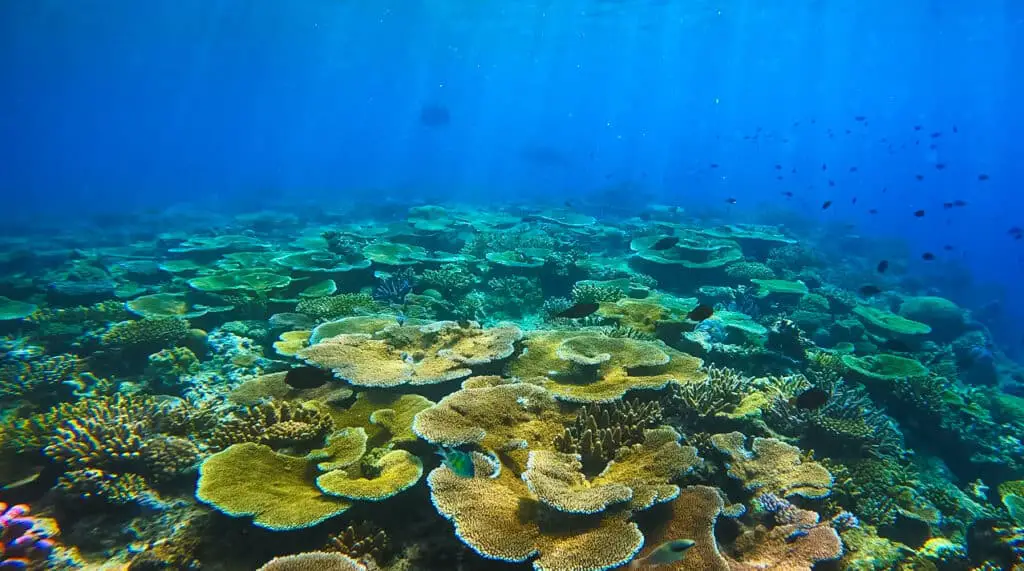
For fish, it was a haven. Palette Surgeons, iconic Bannerfish, striped Angelfish, multicoloured Parrot Fish and many others darted in large shoals all around. The protected marine reserve waters around the islands have certainly resulted in an underwater oasis.
Transfixed by the marine life, I naturally drifted away slightly from the group until I was suddenly startled by a huge creature to my right. A gigantic inky black manta ray – probably 4 metres wide tip to tip – glided past me so close I could have touched it if I had reached out.
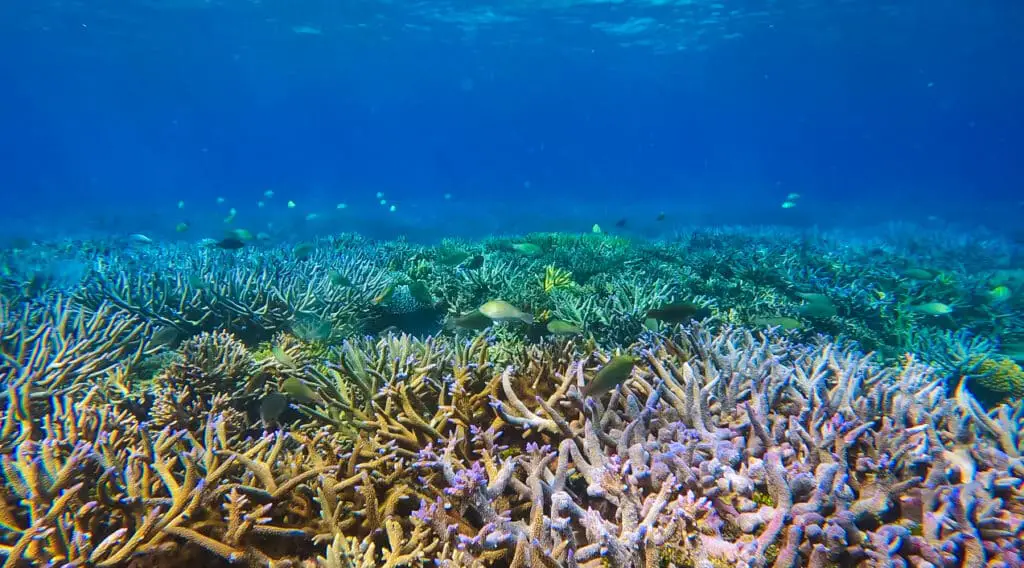
Its mouth was wide open and the lobes located either side of its mouth were unravelled to help funnel more water, and therefore plankton, into its gaping mouth.
Swerving in front of me, the majestic gliding blanket changed direction and dove down, its large pointy barb trailing behind like a large loose thread.
My heart was pounding from the shock – mainly due to the sheer size and close proximity of the thing, which I was certainly not expecting. I frantically looked around so I could share my amazement with the others, but all I could see was the form of the manta ray disappearing in the murkiness behind me.
It was all the more special to be that close – and briefly alone – to witness the majesty of this utterly graceful ocean giant.
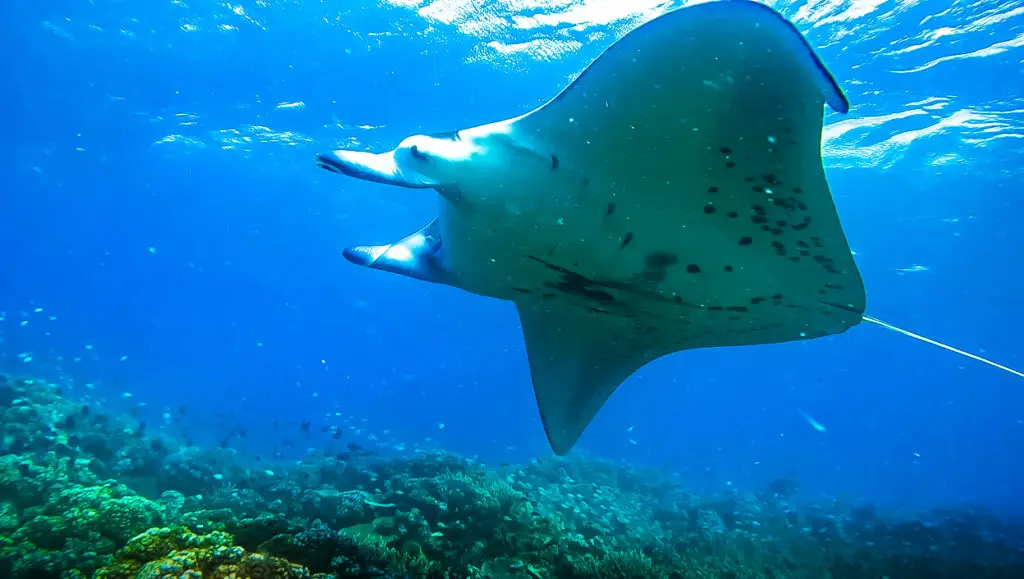
Minutes later we were back in the boat, by which time another vessel from a resort had joined in the fun. Later I learned that before COVID, incredibly you could sometimes expect up to 30 boats here in the channel.
We repeated our drop and glide drill two more times, this time meeting Ell and Champagne (who, in addition to my first encounter with Finlay) made multiple sightings of a total of three spectacular manta rays.
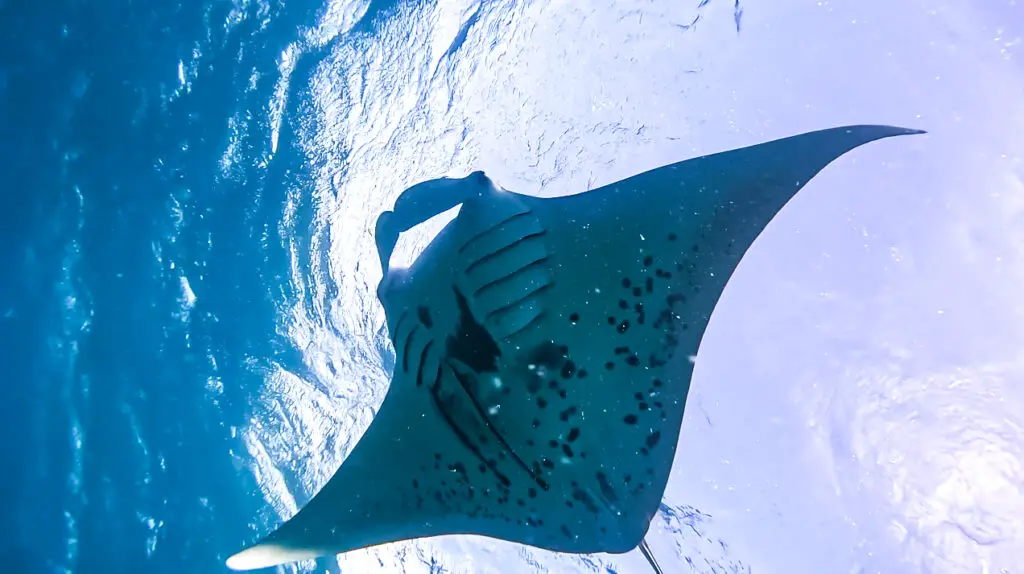
Unlike so many ‘wild’ marine life encounters these days, these manta rays are well and truly in their natural environment. Most importantly, feeding naturally and not with artificially implanted foods to attract them which affects their natural behaviour.
Simply put, underwater wildlife encounters don’t get much more special than swimming with wild reef manta rays in the pristine waters of Fiji…
When to see manta rays in Fiji
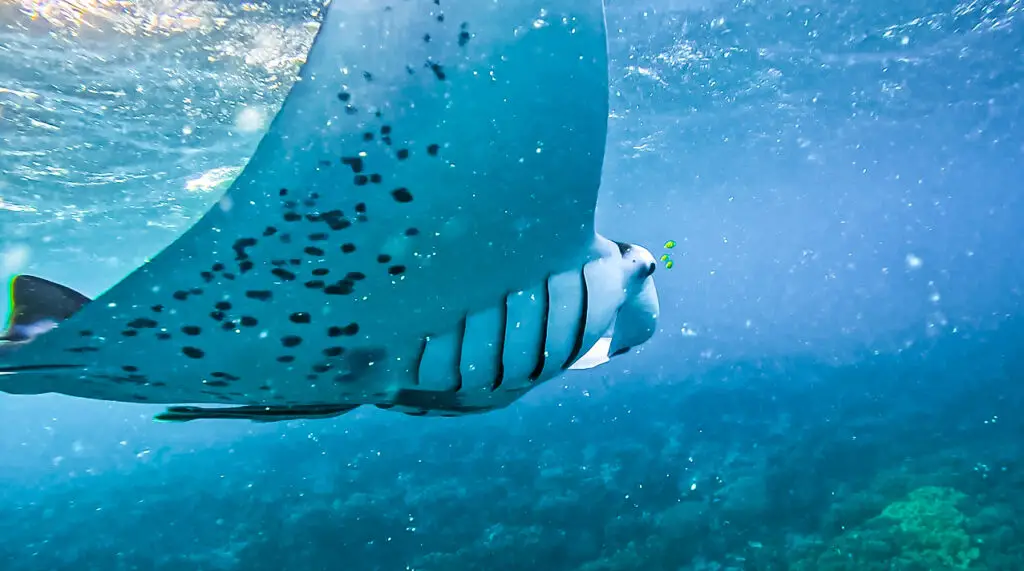
Manta rays can be found in Fiji all year around, but typically between April – October.
This is the season when plankton funnel through channels in the Yasawa group of islands in the north, creating rich feeding grounds. The most famous channel is between Drawaqa and Naviti which is where I had my amazing manta ray snorkelling experience in April 2022.
With so much food being funnelled through such a small channel, snorkelling the popular manta channels in the Yasawa Islands often means you do not just see one manta ray – you see multiple!
The only downside is that April – October is also peak time for tourism to Fiji so it will be busy. If you’re planning on snorkelling with manta rays in Fiji, aim for either side of this window, the shoulder seasons.
Where and how to swim with Manta Rays in Fiji
The best place to stay to be close to the manta ray channel is at Barefoot Manta Resort which is right beside it.
As you can tell by reading this, they check for manta rays daily and will give you the signal when you can go. It costs $65FJD per person per trip (including a mask, snorkel and fins), and in mere minutes of a sighting on one of their recces, you’ll be on a boat and in the water.
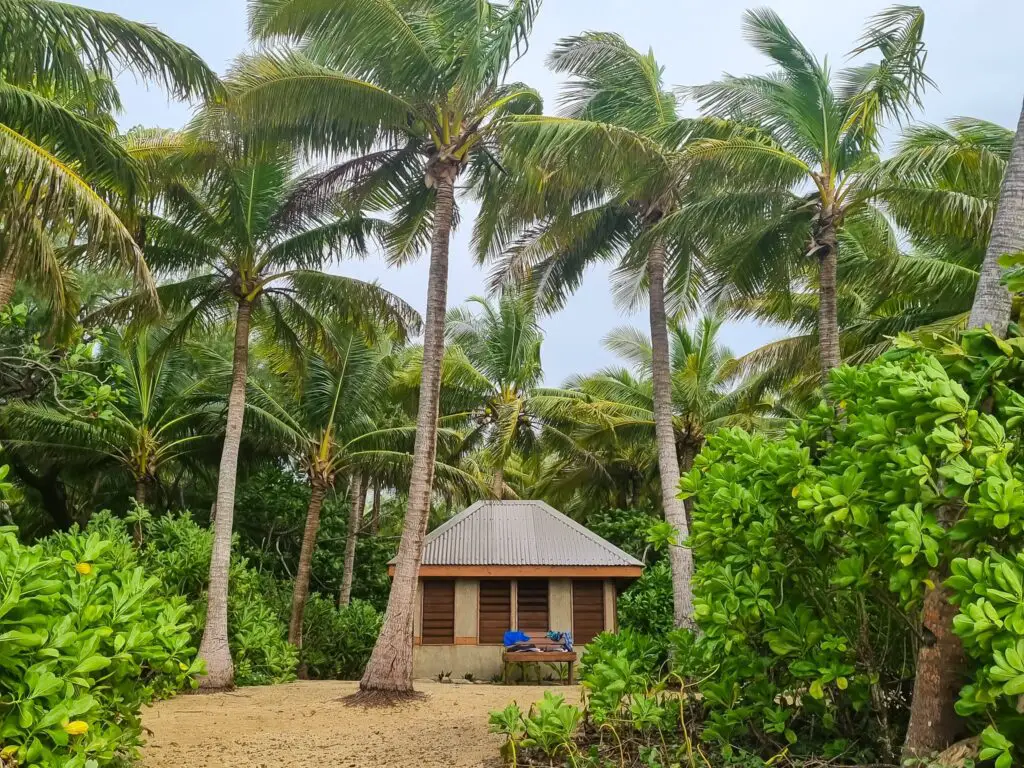
The alternatives to Barefoot Manta are staying on Mantaray Resort on the island slightly south of Drawaqa (Nanuya Balavu Island). I stayed there in a treehouse bure for a few nights after Barefoot to check it out, but it is slightly further away from the manta channel.
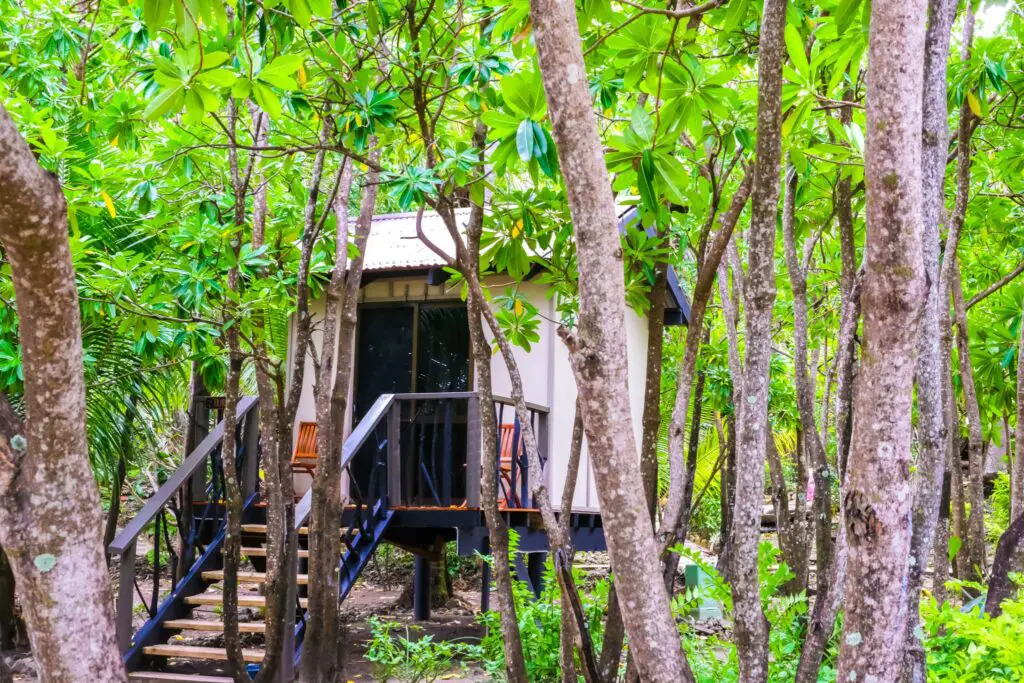
Both Barefoot and Mantaray Resort are accessed via the South Sea Cruises high speed catamaran, which departs from Port Denarau (the port in Nadi) throughout the week.
You can also go swimming with manta rays in Fiji on an organised tour from other islands in the Yasawas, with Awesome Tours Fiji. However, basing yourself at a resort in the Yasawa’s means you can always go more than once if you want to and it will be cheaper.
Although sightings are a lot less guaranteed, manta rays can also be found in Kavadu, in the south, which is about a 1 hour flight from Viti Levu
Is it safe to swim with manta rays in Fiji?
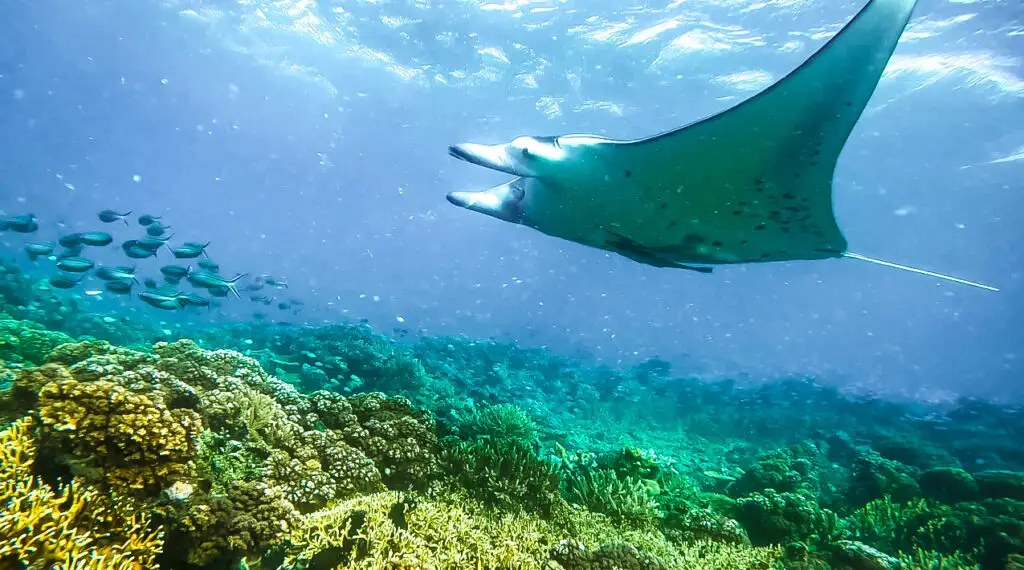
Manta rays, despite their intimidating size and barb, are totally safe to swim with. Their barb is non stinging or sharp and they do not have teeth.
Although in the same family as stingrays, their barb is simply an evolutionary remnant, probably because they don’t need a sting as they have very few predators.
Of course they are wild animals so anything is possible, but they are typically gentle in nature and glide smoothly and gently through the water, usually near the surface where they filter feed plankton. This is why you can snorkel and don’t need to dive to see manta rays, which is great for non-divers or those less confident in deep water.
Manta rays are quite confident creatures, though you may notice that when they are near they roll up their cephalic lobes and close their mouths. Presumably because they don’t like tasting chemicals, such as sunscreen or detergents on our skin.
For this reason, if you want protection from the sun, instead wear a t-shirt that has been washed in a natural detergent without softener, or a wetsuit/swimsuit.
Tips & need-to-knows about snorkelling with manta rays
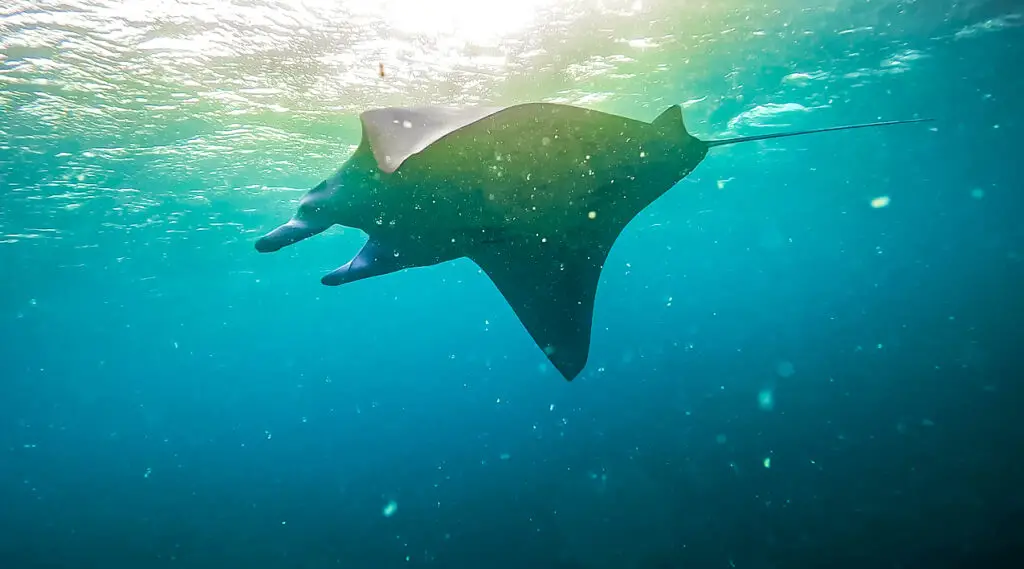
- Independent snorkelling – It is not recommended to go in search of manta rays yourself, even if you’re an experienced swimmer. The current in the channels are extremely strong and you may also not be spotted in the water by other boats. But the above being said, if you’re snorkelling in the shallow waters by the shore of your resort you may be lucky and spot one anyway!
- No touching – it goes without saying that these protected creatures are wild and you should not touch them in any way which could scare or distress them.
- Water confidence – you should only snorkel with manta rays if you are competent in open water. Of course a life vest is always a good idea, but the current is strong so you should only swim if you feel confident.
- Keep calm – thrashing around in the water may scare the mantas and make them think you are a predator. Glide as smoothly as they do, keeping splashing to a minimum for your best chance of multiple encounters.
- Seaplane – don’t have much time in Fiji but want to swim with manta rays? Well, it’s certainly not the most eco (or wallet) friendly method of transport, but Turtle Airways can fly you by private seaplane from Nadi to whichever island in the Yasawa’s you want!
- Snorkelling gear – if you don’t have your own snorkel gear, then don’t worry. You’ll either be provided with some for free, or can hire it from your accommodation or tour provider.
- Reef safe sunscreen – as mentioned above, the best thing is to wear a t-shirt or swimsuit, but if you want to wear sunscreen, choose something reef-friendly like Reef Repair to prevent contaminating the water.
Has this post about swimming with manta rays in Fiji been useful or inspiring? Have you been snorkelling with reef or oceanic mantas before? Feel free to let me know in the comments, I always love hearing from you!
With thanks to Rob at Barefoot Manta for permission to use these photos of the manta rays (aside from the feature image which is by Yann Hubert via Getty Images and the accommodation pictures which are mine).
PIN FOR LATER:
MORE POSTS ABOUT FIJI:
- Is Fiji A Good Destination For Solo Travel?
- What It’s Like To Travel To Fiji In 2022
- A 10 Day Yasawa Islands Itinerary
- Staying In A Treehouse Bure In Fiji
Going to Fiji Soon? Don’t forget these essentials!
Flights: compare and search for the cheapest flights using Skyscanner
Accommodation: hotels to hostels, glamping to apartments, I always use Booking.com
Tours: to find the best group tours and activities (with up to 20% off), use Viator
Visa: don’t forget to check the entry requirements for the passport you are travelling with on the Fiji government website
Inspiration: how about Lonely Planet’s Guide to Fiji, or to kick-start your next adventure, Lonely Planet’s top 500 places to see… ranked?

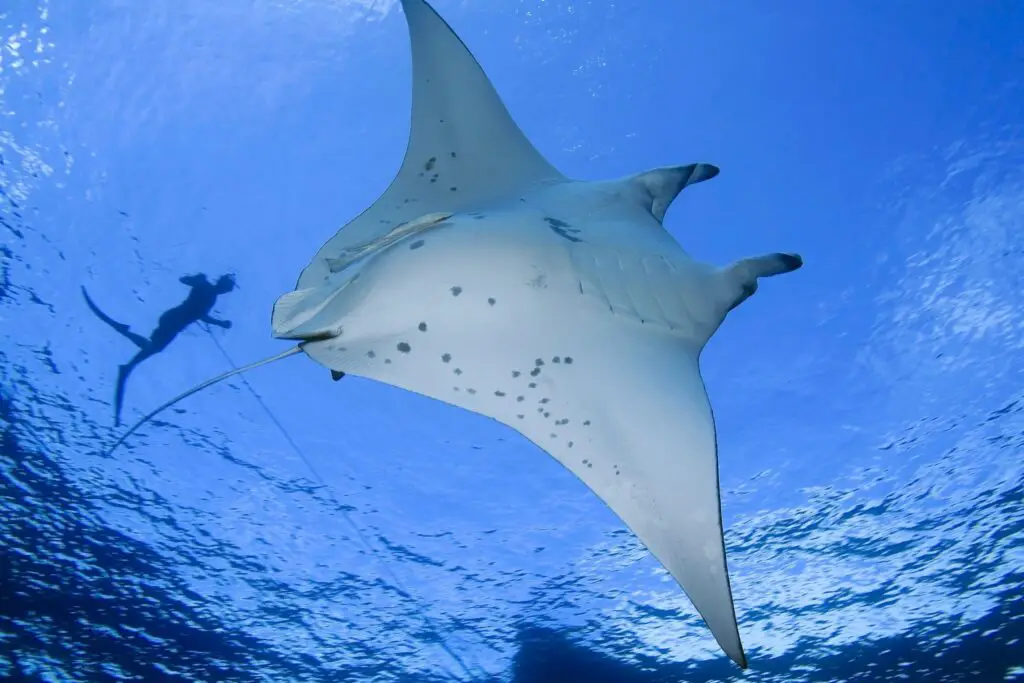

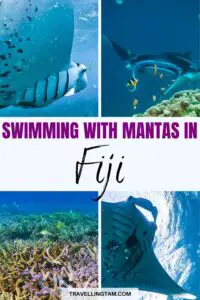
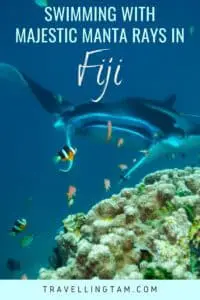

Wow! This looks like an amazing experience. I always thought that Manta Rays had a deadly sting (after the death of Steve Irwin by a sting ray) but it’s good to hear they are harmless & swimming with Manta Rays is now on my bucket list. Thanks so much for sharing!
Yes, they’re completely harmless and actually very gentle natures, but it’s quite a common misconception as they do look very intimidating. I would highly recommend it if you can, it was an incredible experience!
This sounds like the most wonderful of experiences! I’ve dived and snorkeled with mantas a few times in Hawaii and Bali and they never fail to amaze me with their sheer size and grace.
Ohh lucky you! Aren’t they just the most magical creatures!?
Oof, what I’d give to go swimming with mantas right now! This is such a lovely post – I thoroughly enjoyed reading through it. Hoping to have this experience myself one day soon!
Thank you Bea! It really is quite an unforgettable experience if you ever get the chance either in Fiji, or elsewhere in the world!